What is the Rotator Cuff?
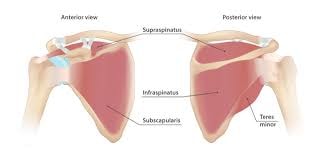
The rotator cuff consists of 4 muscles that attach the shoulder blade (scapula) to the upper arm bone (humerus). They assist in controlling and stabilising movement of
the shoulder. You can think of them a little like the partner in a tug of war e.g. as the big muscles on the front of your shoulder pull your arm for
ward, the rotator cuff at the back opposes that motion a little to help keep your upper arm in it’s socket. Rotator cuff disease, a common tendon injury particularly in older populations, can develop due to factors such as age, smoking, and poor posture.
The four muscles that make up the rotator cuff are the supraspinatus, infraspinatus, teres minor, and subscapularis.
Types of Rotator Cuff Tears
Rotator cuff tears can be classified into several types based on their severity, location, and cause. Understanding these distinctions can help in diagnosing and treating the injury effectively.
- Partial Tear: These occur when the tendon is only partially damaged. Partial tears can be further divided into articular-sided tears, which affect the underside of the tendon, and bursal-sided tears, which impact the top side. While painful, partial tears do not completely sever the tendon from the bone.
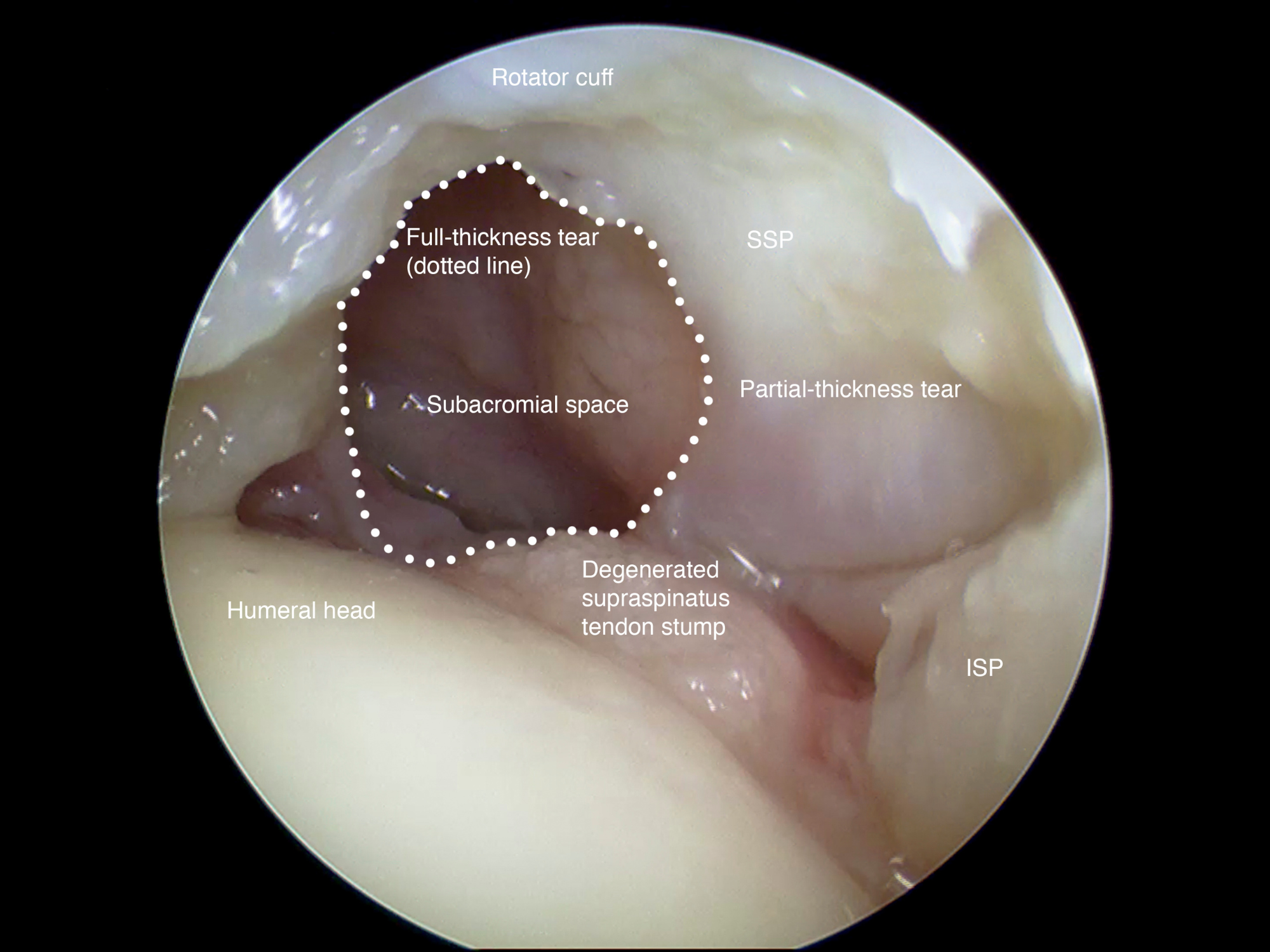 Complete Tear: Also known as full-thickness tear. In these cases, the tendon is completely torn, resulting in a full separation from the bone. This type of tear often leads to significant shoulder pain and arm weakness, requiring more intensive treatment.
Complete Tear: Also known as full-thickness tear. In these cases, the tendon is completely torn, resulting in a full separation from the bone. This type of tear often leads to significant shoulder pain and arm weakness, requiring more intensive treatment.- Acute Tear: These tears happen suddenly, often due to a traumatic event such as a fall or lifting something heavy. Acute tears are typically associated with immediate pain and a noticeable loss of function.
- Degenerative Tear: These develop gradually over time due to wear and tear on the tendon. Degenerative tears are more common in older adults and those who engage in repetitive shoulder activities.
- Traumatic Tear: Similar to acute tears, traumatic tears result from a specific injury or trauma. This can include sports injuries or accidents that place sudden stress on the shoulder joint.
Understanding the type of rotator cuff tear is crucial for determining the appropriate treatment and rehabilitation plan.
Causes and Risk Factors
Rotator cuff tears can arise from a variety of causes and risk factors. Recognizing these can help in both preventing and managing the injury.
- Age: As we age, the tendons in our rotator cuff naturally wear down, making rotator cuff tears more common in individuals over 40.
- Overuse: Repetitive motions, especially those involving overhead activities, can strain the rotator cuff and tendons, leading to tears over time.
- Trauma: Sudden injuries, such as falls or accidents, can cause immediate damage to the rotator cuff, resulting in acute or traumatic tears.
- Degenerative Conditions: Conditions like osteoarthritis and tendonitis can weaken the tendons, increasing the risk of a rotator cuff tear.
- Genetics: Some people may be genetically predisposed to rotator cuff tears, making them more susceptible to this type of injury.
- Smoking: Smoking can reduce blood flow to the tendons, impairing their ability to heal and increasing the risk of rotator cuff tear.
- Obesity: Excess weight can place additional strain on the shoulder muscles and tendons, heightening the risk of injury.
By understanding these causes and risk factors, individuals can take proactive steps to protect their rotator cuff and maintain shoulder health.
Symptoms of Rotator Cuff Tears
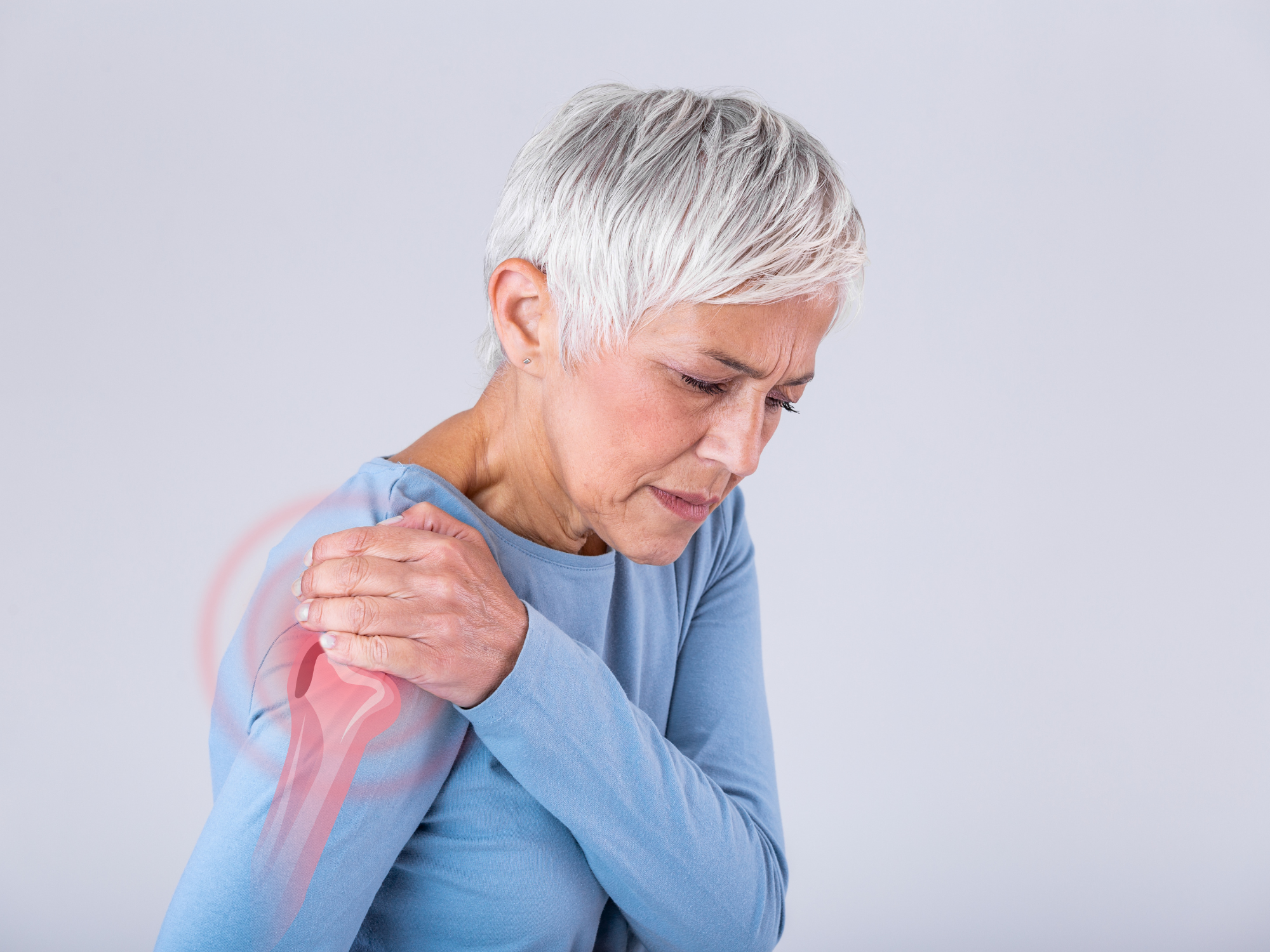
Recognizing the symptoms of a rotator cuff tear is essential for early diagnosis and treatment. Common symptoms include:
- Pain: Shoulder pain is a hallmark of rotator cuff tear. This pain can be deep and aching or sharp and shooting, often worsening with lifting or rotating the arm.
- Weakness: A torn rotator cuff can lead to significant shoulder weakness, making it difficult to perform everyday tasks like lifting objects or reaching overhead.
- Limited Mobility: Reduced range of motion in the shoulder is another common symptom. This can make activities that involve reaching or rotating the arm challenging.
- Snapping or Clicking: Some individuals may experience snapping or clicking sensations in the shoulder, particularly during movement.
- Arm Pain: Pain can also radiate down the arm, sometimes accompanied by numbness or tingling.
If you experience any of these symptoms, it’s important to seek medical advice to determine if you have a rotator cuff injury and to begin appropriate treatment.
Diagnosis
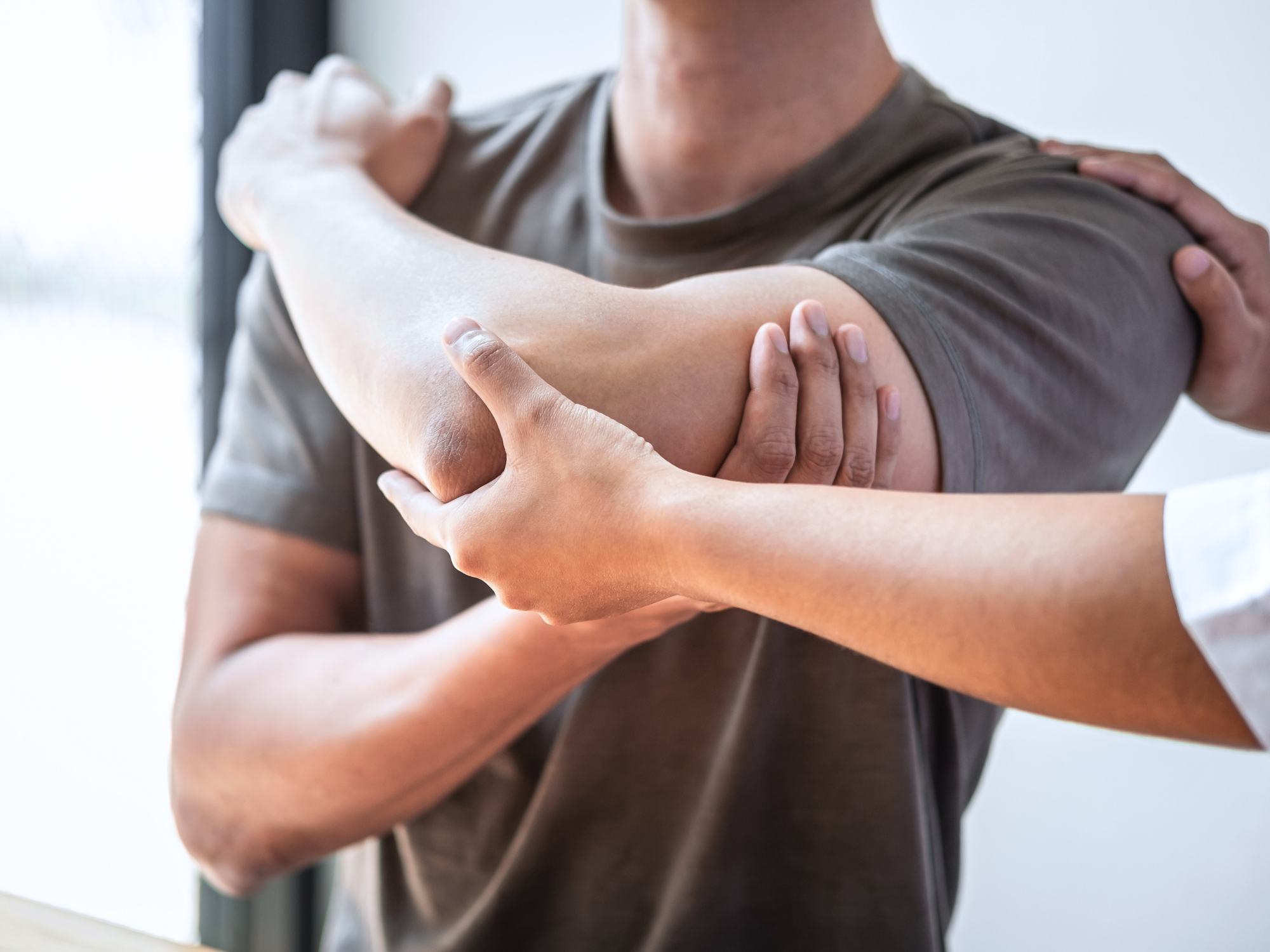
Diagnosing a rotator cuff injury involves a combination of physical examinations and possibly imaging tests. Here’s what you can expect during the diagnostic process:
- Shoulder Abduction Test: Your physiotherapist may ask you to lift your arm to the side to assess the strength and mobility of your rotator cuff. This test helps identify any weakness or pain associated with the injury.
- Shoulder External Rotation Test: In this test, you’ll be asked to rotate your arm outward. This movement can help pinpoint issues with the rotator cuff responsible for external rotation.
- Shoulder Internal Rotation Test: Similarly, rotating your arm inward allows the physiotherapist to evaluate the muscles involved in internal rotation.
Imaging can be helpful for a comprehensive diagnosis of rotator cuff pathology:
- X-rays: While X-rays can’t show soft tissue injuries like rotator cuff tears, they can help rule out other conditions such as bone fractures or osteoarthritis.
- MRI: MRI scans provide detailed images of the shoulder muscles and tendons, making it easier to identify a rotator cuff tear or other injury.
- CT Scans: CT scans offer detailed cross-sectional images of the shoulder, helping to diagnose the extent and location of rotator cuff tear.
These diagnostic tools enable healthcare providers to accurately diagnose rotator cuff injuries and develop an effective treatment plan.
What are the most common rotator cuff injuries?
Rotator cuff injuries can range from mild strains to more severe tears as well as other conditions involving the tendons that join the muscles to the bone. Symptoms of a rotator cuff injury may include a combination of deep aching or sharp shooting pain, immediate weakness, and reduced range of motion in the shoulder. Treatment for a rotator cuff injury would usually include an initial bout of conservative management & rehabilitation from an experienced physiotherapist. Physiotherapy is crucial as a primary treatment for rotator cuff injuries, playing a significant role in restoring flexibility and strength. If, after a reasonable amount of time and effort, conservative management does not have the desired effect, a surgical consult with an orthopaedic surgeon may be an option. Surgical treatment for rotator cuff repair can include arthroscopic rotator cuff repair or open rotator cuff repair.
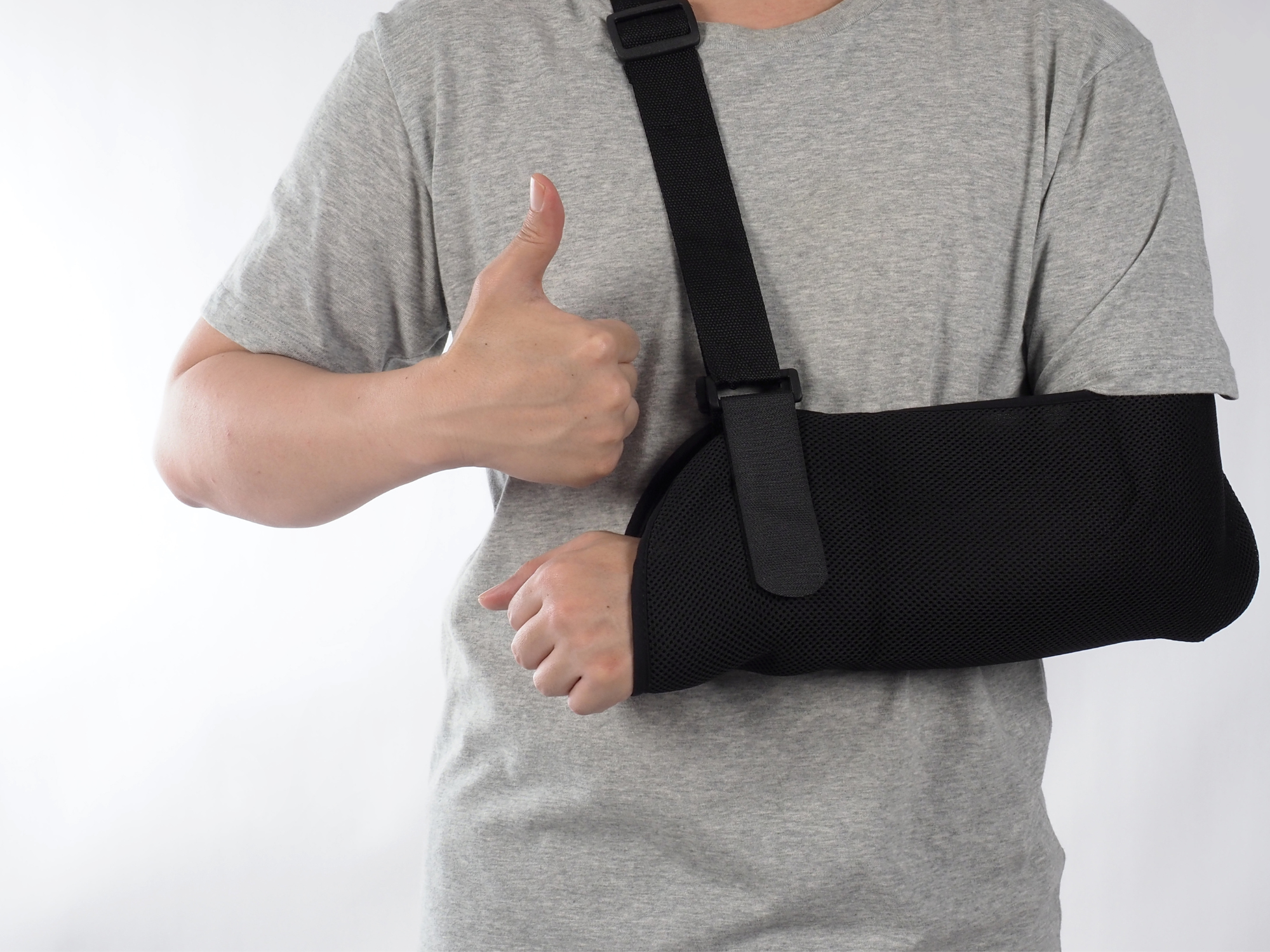
Should I see a physiotherapist for a rotator cuff injury?
It is generally a good idea to see a physiotherapist for a rotator cuff injury. Physiotherapists are trained to help individuals with a variety of musculoskeletal injuries and conditions, including rotator cuff tears. They can help diagnose your specific injury, manage pain and swelling, improve range of motion, and strengthen the muscles and tendons of the rotator cuff.
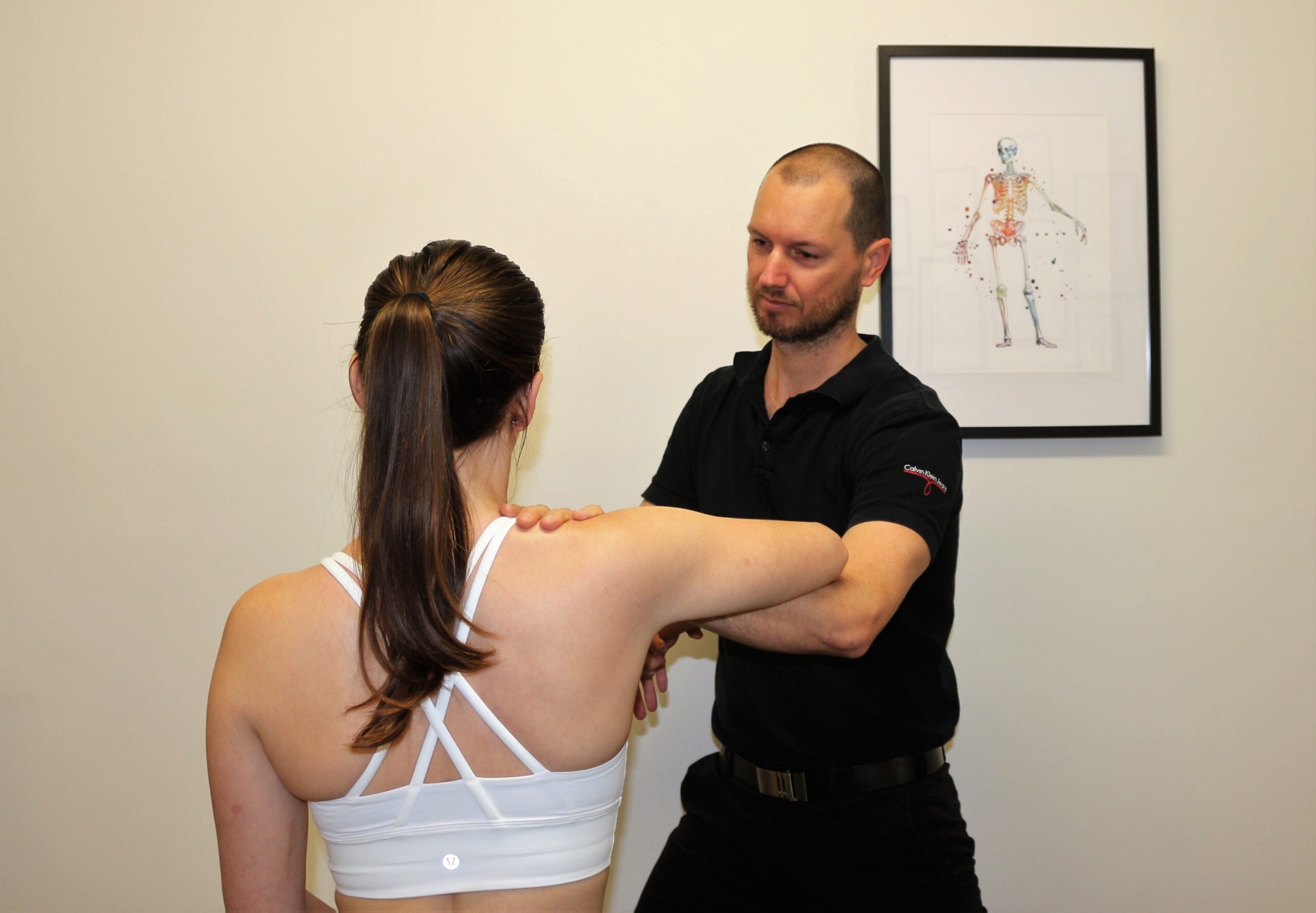
Here at KC Health Services, our Initial Physiotherapy appointments are 40 minutes in length allowing us to thoroughly assess your injury and develop a comprehensive treatment plan that is tailored to your specific needs. This may include a small amount of manual therapy, movement strategies, exercises to improve flexibility and strength and possibly modalities such as heat or ice to help manage pain and swelling.
Physiotherapy can be an important part of your recovery from a rotator cuff injury and can help you return to your normal activities as soon as possible. It is important to follow your physiotherapist’s treatment plan and to communicate any concerns or changes in your symptoms to ensure that we can effectively monitor and modify your treatment plan to be as effective as possible.
How to pick the best physiotherapist for a rotator cuff injury?
Here are some tips for selecting a physiotherapist for a rotator cuff injury:
- Look for a physiotherapist with experience treating rotator cuff injuries: It is important to choose a physiotherapist who has experience treating rotator cuff injuries and is familiar with the specific needs and challenges of these injuries.
- Consider the physiotherapist’s qualifications: Make sure the physiotherapist you choose is qualified and registered with the Australian Health Practitioner Registration Agency (AHPRA). You can search the register at this link.
- Look for a physiotherapist who is a good fit for you: It is important to choose a physiotherapist who you feel comfortable with and who is able to explain things in a way that you understand. Look for someone who is patient, compassionate, and who takes the time to listen to your concerns and answer your questions. Here at KC Health Services we specialise in working with people who value their health and want their rotator cuff rehab to enable them to return to active hobbies or sport.
- Consider location and availability: Choose a physiotherapist who is convenient to your home or work and who has appointment times that are convenient for you. This is important as consistency through-out your entire treatment plan is important.
- Ask for recommendations: You can ask your primary care doctor or other healthcare providers for recommendations, or ask friends, family, or colleagues if they have any experience with physiotherapists in your area. You can also check online reviews or ratings to get a sense of the quality of care provided by different physiotherapists.
What are the top 4 exercises for rotator cuff rehabilitation?
Here are four exercises that can be helpful for rotator cuff rehabilitation:
Static contractions – North, South, East, West
With your elbow by your side and bent at 90 degrees…
- place your palm against the frame of a door and push inwards for 10 seconds (West)
- Then put the back of your hand against the frame and push outwards for 10 seconds (East)
- Make a fist and place your hand under the dining table and pull upwards for 10 seconds (North)
- Place your hand on top of the table and push downwards for 10 seconds (South)
Scapular retraction
Lying on your bed, squeeze your shoulder blades back into the bed imagining you’re trying to pinch a pencil between them. Hold for 10 seconds and relax.
External rotation with a band (elbow supported)
Sit in a chair with a table alongside you and rest your elbow on the table either in-line with, or slightly in front of your shoulder. From there you want to keep your elbow at 90 degrees rotate your upper arm so that your hand raises up off the table. Only go as high as you can without too much pain. Then slowly lower back down. For added weight you can hold a book or can of food.
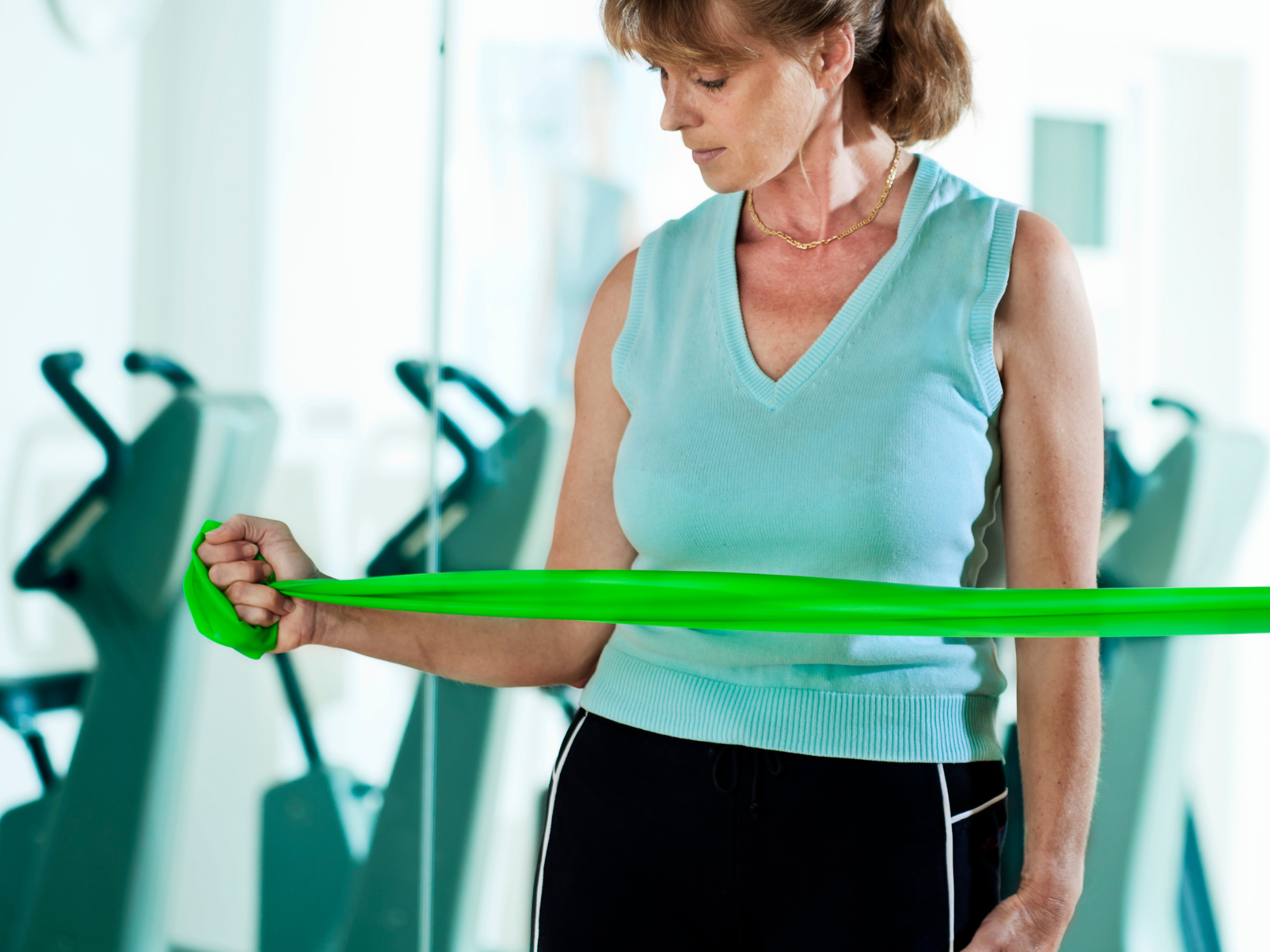
Single arm Row
In a forward bent position, hold a weight in your hand and pull your elbow up to be in line with your body. It is important the squeeze your shoulder blade back at the same time. Hold for 1-2 seconds and slowly lower the dumbbell back to the starting position.
It is important to consult with a healthcare provider or physiotherapist before starting any exercise program for a rotator cuff injury. They can help you determine the appropriate exercises and progression for your specific needs and ensure that you are performing the exercises correctly to avoid further shoulder pain and injury.
Preventing Rotator Cuff Injuries
Preventing rotator cuff injuries involves a combination of proper training, equipment, and technique. Here are some tips to help keep your rotator cuff healthy:
- Warm Up and Stretch: Before engaging in any physical activity, take the time to warm up and perform stretching exercises for your rotator cuff muscles and tendons. This can help prevent strains and tears.
- Strengthen: Incorporate exercises that specifically target the rotator cuff muscles into your routine. Shoulder rotations, arm raises, and resistance band exercises can help build strength and stability.
- Avoid Overuse: Repetitive strain can lead to rotator cuff injuries. Take regular breaks and avoid overusing your shoulder, especially if you engage in activities that require repetitive motions.
- Maintain a Healthy Weight: Keeping a healthy weight reduces the strain on your shoulder joint, muscles and tendons, lowering the risk of injury.
By following these tips, you can help prevent rotator cuff injuries and maintain optimal shoulder health.
Do normal shoulder exercises help strengthen the rotator cuff?
Many traditional shoulder strengthening exercises can help build the rotator cuff muscles and improve overall shoulder stability and mobility. This is because the rotator cuff works in conjunction with all the other major muscles around your chest, back and shoulders to provide stability to the shoulder joint during all shoulder movements. Some examples of exercises that may be helpful for rotator cuff rehabilitation include:
- Shoulder press
- Lateral raise
- Reverse fly
- Push-ups
- Bent over Rows
Please note that every injury (and person) is different, so exercises that work for one may work for another.